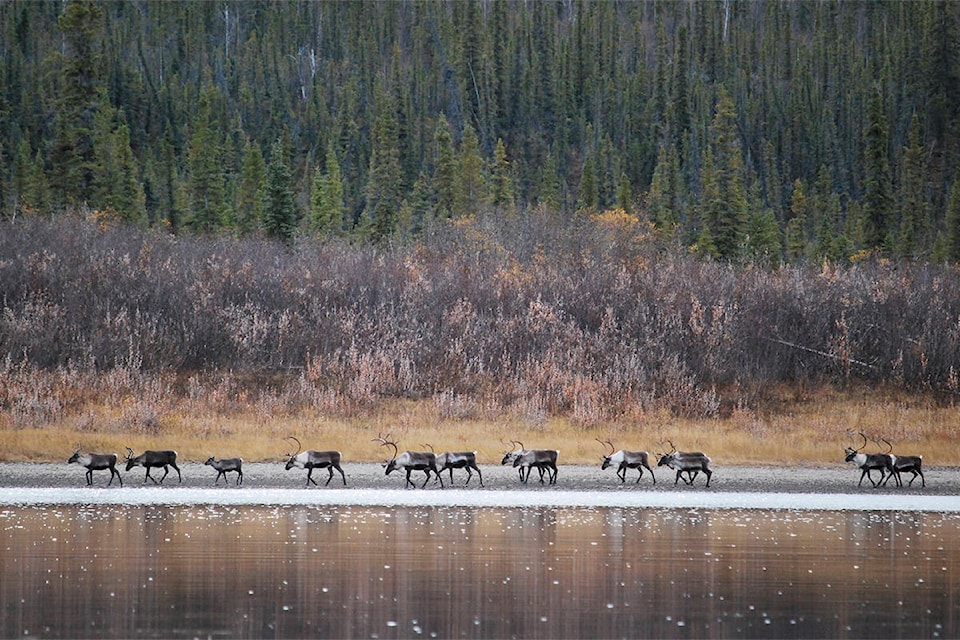It’s high-time the Yukon had its own, territory-specific species-at-risk legislation, according to the Yukon chapter of the Canadian Parks and Wilderness Society (CPAWS).
The organization released a report Mar. 2 at the Yukon Biodiversity Forum entitled “Safeguarding Our Ecological Identity: Why the Yukon needs laws that protect species at risk,” highlighting what it perceives as a critical need for legislation.
Minister of Environment Pauline Frost was not available for comment by press time, nor was a representative from that department. In response to the report from CPAWS, however, Frost issued a statement to the News via email, saying that “the Yukon Government is currently working to develop a Yukon Species at Risk Act.”
“This work includes preliminary research and discussions with partners, stakeholders and the public to work towards implementing legislation,” the statement added.
Further information on what that act would look like, when consultations and research was begun and when it is expected to be completed was not available by press time from Frost or the department of environment.
This seems to be the first time such a definitive statement was made.
Kate White, NDP MLA for Takhini-Kopper King, who has brought up the issue, by her own count, “at least 16 times since 2012” told the News she was not aware this piece of legislation was being developed.
White referred the News the Nov. 8, 2018 Hansard record, in which White brought up the issue in the legislature, noting that “there have been multiple drafts of this legislation completed for government to consider — but so far, no action. The Yukon government committed to implementing species at risk legislation. We expect protections that reflect Yukon’s unique interests and biodiversity.”
She went on to ask if Yukoners are any closer to legislation.
Frost’s reply does not seem to indicate any specific on-going work.
She says she “can advise the Members of the Legislative Assembly and Yukoners that the Department of Environment is looking very diligently at the pressures that we are seeing across the Yukon with respect to biodiversity and species at risk. We are looking at a strategic approach, and we are working with our partners … to assess the protocols going forward. We will be happy to have a discussion as this process evolves.”
“We … most definitely agree that we need to look very specifically at a species at risk process in the Yukon. I can commit that those are things that we are doing, and we will be happy to have further discussions about that process as we evolve,” Frost added at the time.
Malkolm Boothroyd, Programs Coordinator for CPAWS, said that he was aware that “background” research into species at risk legislation was occuring but not of a specific time line or definitive plan of action.
According to the CPAWS report, the planet is “bleeding biodiversity,” with bird, reptile, mammal and fish populations declining by 60 per cent in the last 50 years and species going extinct at a rate of “100-1000 times” faster than “natural rate of extinction.” This requires “ambitious action,” according to CPAWS.
Presently, the only legislation that applies to the Yukon to protect species at risk is the federal Species At Risk Act (SARA), Boothroyd said.
That act only applies to lands which are controlled by the federal government; in the Yukon, that means only about eight per cent of the territory, mainly national parks.
Technically, unless something extreme is happening, SARA cannot force an individual province or territory to actually do anything regarding specific action to protect individual species within its jurisdiction, only make recommendations.
The report notes that the Yukon does have a Wildlife Act, but that “lack of protection for species at risk in the Yukon stems from inconsistent interpretations of what ‘wildlife’ means,” under that act.
In 1996, the Yukon, along with all other provinces and territories – with the exception of Quebec – signed the National Accord for the Protection of Species at Risk, Boothroyd said. The intention was that provinces and territories eventually create their own legislation, specific to their jurisdictions – two decades later, however, that still hasn’t happened in the Yukon.
SARA was really just “designed to fill in the gaps” in species protection in Canada, Boothroyd said.
Although the Yukon has not seen as severe reductions in biodiversity as more populated areas, “we can’t rely on being remote to protect our biodiversity,” said Boothroyd.
“If the Yukon had its own species-at-risk act it would give us the tools to target local species that need it,” Boothroyd added.
The CPAWS report lists seven specific key recommendations, including creating an “independent panel” of scientists and experts in “Indigenous knowledge,” that that panel should “conduct peer reviewed species assessments” which would give at-risk species “legal designations automatically.” Legislation should: mandate the completion of action plans for threatened and endangered species, within two years of species being listed, as such.
Other jurisdictions are currently struggling with some of the same issues, said Boothroyd; Alberta, Saskatchewan and Nunavut still don’t have provincial or territorial species at risk acts. British Columbia is currently in the process of putting one together – although it doesn’t have one on the books at this time – and it would probably be the most efficient for the Yukon to take a look at what that province is doing as it creates its own, Boothroyd said.
“Yukon doesn’t have to reinvent the wheel,” he noted.
A copy of the report from CPAWS is available at https://cpawsyukon.org.
Contact Lori Fox at lori.fox@yukon-news.com
Correction: The story was updated to show that eight per cent of the territory is covered under federal SARA legislation. An incorrect number was part of the original CPAWS report.
